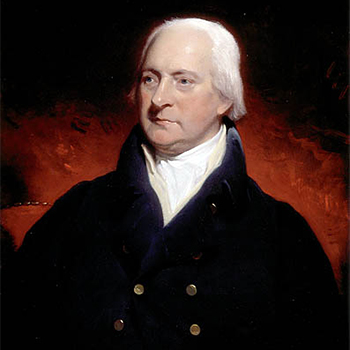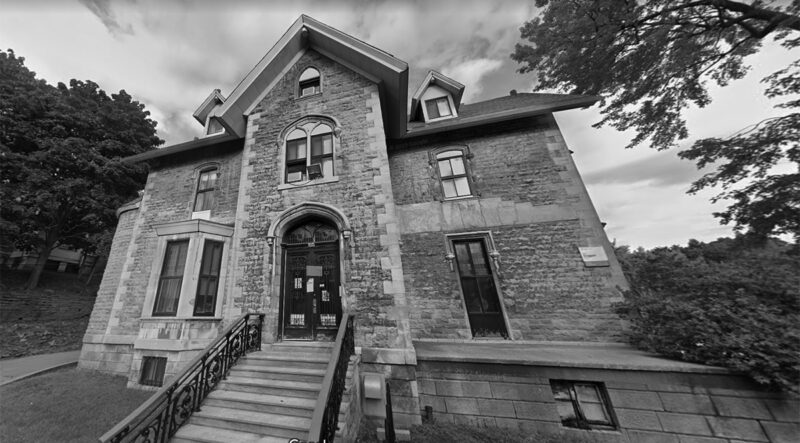At the base of Mount Royal, in the heart of Montreal’s Golden Square Mile, sits an English gothic mansion that has a vein of paranormal lore shooting through it.
Located at the southwest corner of Pines Avenue and McTavish Street, the Duggan House, a.k.a. Braehead, is a reminder of the City of Festivals’ unique past. Especially when it comes to one street’s namesake, the very rich Scottish businessman, Simon McTavish.
McTavish was one of the co-founders of the North West Company, one of Hudson Bay’s biggest rivals in the late 1700s. McTavish would walk around the city, dressed ostentatiously and request its citizenry call him “The Marquis”. If people did not, it was said that he would strike them with his gold-tipped cane.
His home sat at the very site of the Duggan House is now and was constructed in 1796. It was built for his family, wife Marie-Marguerite Chaboillez and four children.
When McTavish died in 1804, the castle was unfinished. And it would remain that way, abandoned, eventually falling into disrepair. Chaboillez married again in 1808 to William Plenderleath.
McTavish’s partner in the fur trading industry, James McGill, would leave his land to the university which would later bare his name. McGill was founded in 1821, and that’s when the stories begin.
Knowing how boisterous college students can be, spooky tales of phantoms became commonplace. Most of the rumours of hauntings began once McTavish’s family tomb was vandalized in 1827 by the aforementioned McGill students.
The last ruins of McTavish’s castle were razed for a new home by 1861. That new home would become Duggan House, but it was originally built by Orrin S. Wood, then president of the Montreal Telegraph Company. Eventually, the founding president of Sun Life, Matthew Hamilton Gault, would also reside in the mansion.
The manor changed hands multiple times thereafter until it was gifted to McGill on the condition that its owner at the time, George Herrick Duggan, could stay until his death. He signed off on Oct. 8, 1946.
McGill University still owns and uses the property for its Department of Education staff.
A Golden Square Mile
Although it’s used for higher learning now, what is most interesting about Duggan House to Donovan King, the owner of Haunted Montreal Ghost Tours, is its foundation.
“I think it’s fascinating that they recycled these stones from a haunted castle just because they were very well cut and dressed,” he said, during a September 2021 phone conversation, adding that he does not take tours by the building, but stops his tour just down the street at Peel Street.
“If you put haunted stones into a new building, odds are it might become haunted as well,” King said, with a laugh. It is not uncommon for buildings to be constructed from reused materials.

It is alleged that people could see the ghost of McTavish dancing on top of the castle’s roof in the moonlight. Additionally, McTavish could be heard playing the bagpipes. Other horrible noises would often be heard emanating from the castle and were often described as the sounds of pain and misery.
“But the best story was him tobogganing down the slopes in his coffin and terrorizing everyone,” King recalled. “They actually wrote a story about it called Nips Daimon in an 1895 publication in Ontario.”
But it’s not the bombastic McTavish that people report seeing.
There are a couple of phantoms that observe the students and professors walking the halls. One is a woman dressed in a 19th-century petticoat who has been seen atop the spiral staircase.
King wrote about a female graduate student’s encounter with her in the large foyer of the Duggan House on his blog, Haunted Montreal. The student witnessed a woman materialize at the top of the staircase and then descend the stairs.
The grad student panicked, alarming the professor and causing him to look in the direction his student was looking in. There was nothing there. But they both heard a rattling noise at the window as if someone had thrown something at the Venetian blinds.
That item was the student’s purse, which was seen tangled up in knots and dangling from the blinds.
Apparitions and poltergeist activity aside, phantom footsteps and missing objects are common fare for whatever is inhabiting the house when the academics go home.
While details about the female apparition are minimal, some witnesses suspect a second spectre is that of a worker who fell three stories to his death while demolishing McTavish Castle in 1861 and is allegedly still roaming the property.
“This is Canada’s Legend of Sleepy Hollow,” King admitted. “There should be a movie made. It’s such a great story, this idea of him tobogganing down the mountain in his coffin.”
But there is doubt that it’s McTavish’s ghost tobogganing down Mount Royal. Those studying medicine were said to commit the crime of graverobbing so they could have cadavers for med school.
An anatomy professor nicknamed “The Resurrectionist” stole the bodies — that were awaiting burial when the ground thawed — from the corpse house during the winter months and slid down the mountain to the campus.
Still, Duggan House is one of the oldest buildings on the McGill campus and it has ties to Montreal’s rich mercantile history. And King is always game for more tales to share on his ghost tours of Montreal.
“I collect as many stories as I can,” King said. “And you’ll get a lot of these stories from these old books of legends.”
History lesson
Rod MacLeod, a Montreal historian, has never seen any documentation associating the foundation of Simon McTavish’s home with the Duggan House, but he doesn’t find it out of the ordinary.
“It’s very reasonable to think. There was a house there, and it was torn down and why would they import bricks if they could use ones that were there,” he admitted during a November 2021 phone interview.
McTavish was a fixture in Montreal. But while Montreal’s key businessmen were vying for the top spot of the most impressive home, McTavish outdid them all.
What complicates McTavish’s story, however, is that his will was problematic. After his death, his heirs scattered, thus leaving the castle to the elements from 1804 to the late 1850s.
“You come across these legends all over the place,” MacLeod recalled. “I don’t know exactly where they stemmed from, but the very romantic and sensational way in which this guy died: he was surveying the construction work, caught a chill and went home and died.”
With no heirs to lay claim, the McTavish property was eventually purchased and divided up by several. Within a few years, a series of mansions would be constructed, including Duggan House.
But during McTavish’s time, a large swath of land was forested and rural in some spots. More than likely the crops grown would be fruit-bearing trees.
“This is a house that’s almost in the woods and it’s not like just an old house in the city where people walk by every day,” MacLeod said. “There are people who might be walking up through the woods at night and come across a bit of the ruins. It’s more atmospheric. It’s no wonder that these legends grew from his romantic life.”
The Victorian fascination with ghost stories would slowly fall by the wayside and McTavish would become a ghost in the proverbial sense, and the Golden Square Mile of Montreal would be born.
“When it came time to turning the area into a proper Victorian area, the Golden Square Mile and so forth, Simon was pushed out of the way as part of the past,” MacLeod said. “There’s quite an interesting legacy, which was clearly supernatural.
“They did quite a lot of work to suppress and not worry about it, but it was there.”
Also there, across Pine Avenue is the Allan Memorial Institute (a.k.a. Ravenscrag), which was the home of CIA-led LSD experiments on Canadians known as MKUltra, which adds to the uncanny history of Montreal’s Golden Square Mile.
As for whether there are any reminders of McTavish still around, he is still buried to this day at the location of his original castle. And there is a monument just west of the northern parking lot of Allan Memorial Institute.
“Is that relevant?” MacLeod asked. “Certainly to ghost stories because they know that he’s physically up there, and this all feeds into the early and mid-Victorian fascination for ghost stories.”
Back to school
As for today’s university students, the Duggan House draws very little attention, especially from those at the campus newspaper, the McGill Daily.
McGill Daily staff member, Anna Zavelsky, was unaware of the haunting or the building’s unique past.
“From what I know, it’s not talked about that much, if it all, among McGill students,” Zavelsky wrote, in an email. “The allure of it isn’t as prominent as it used to be.”
That’s not to say the location’s history goes ignored.
For those wanting to dig deeper into Montreal’s grim past, Dundurn Press Mark Leslie and Shayna Krishnasamy collected stories about the Duggan House for their 2018 book Macabre Montreal: Ghostly Tales, Ghostly Events and Gruesome True Stories.

